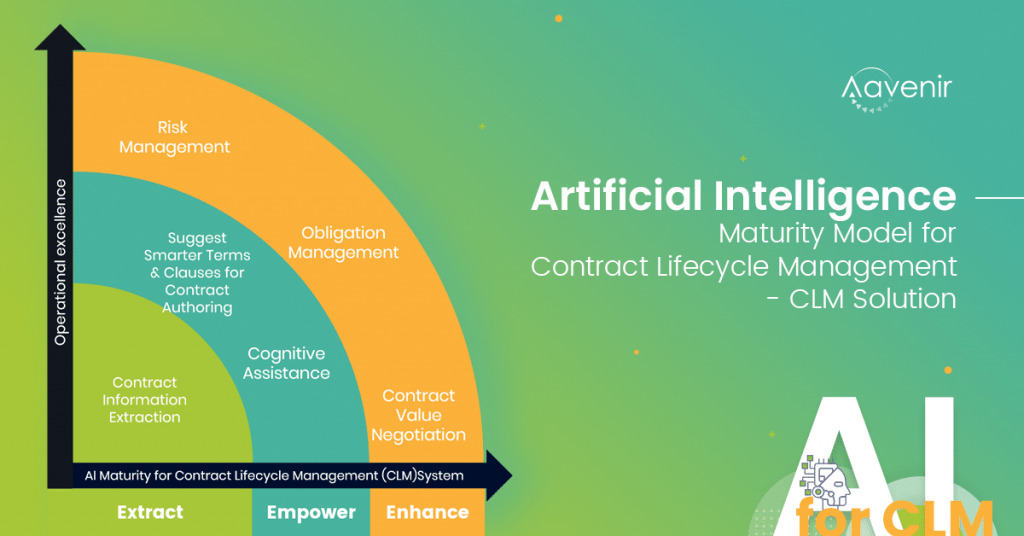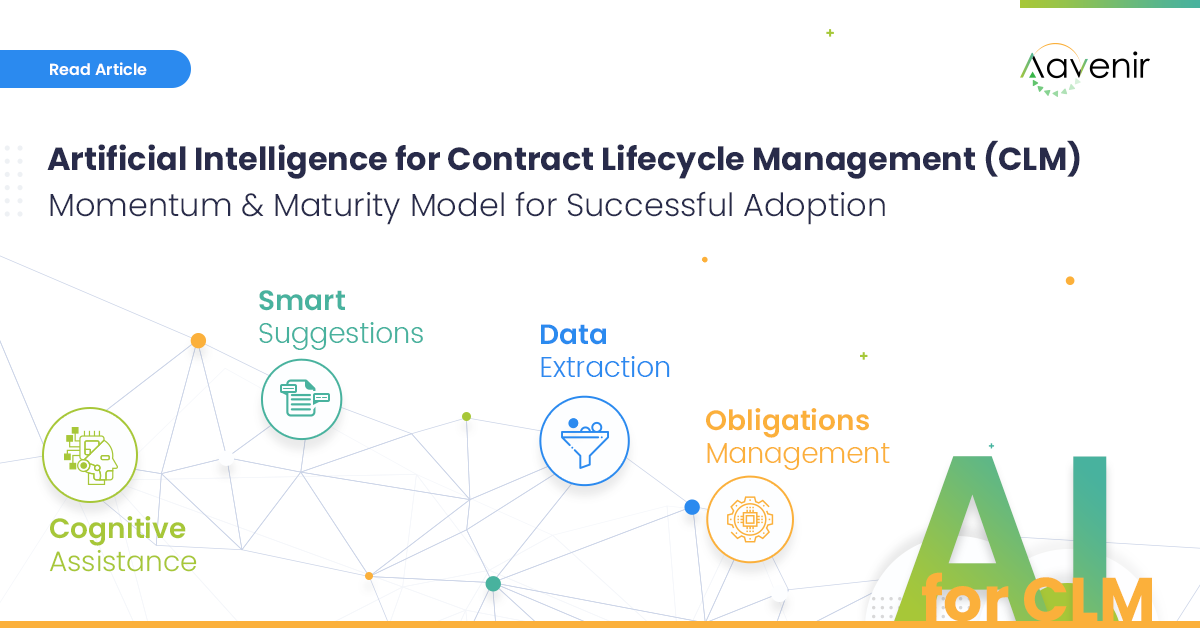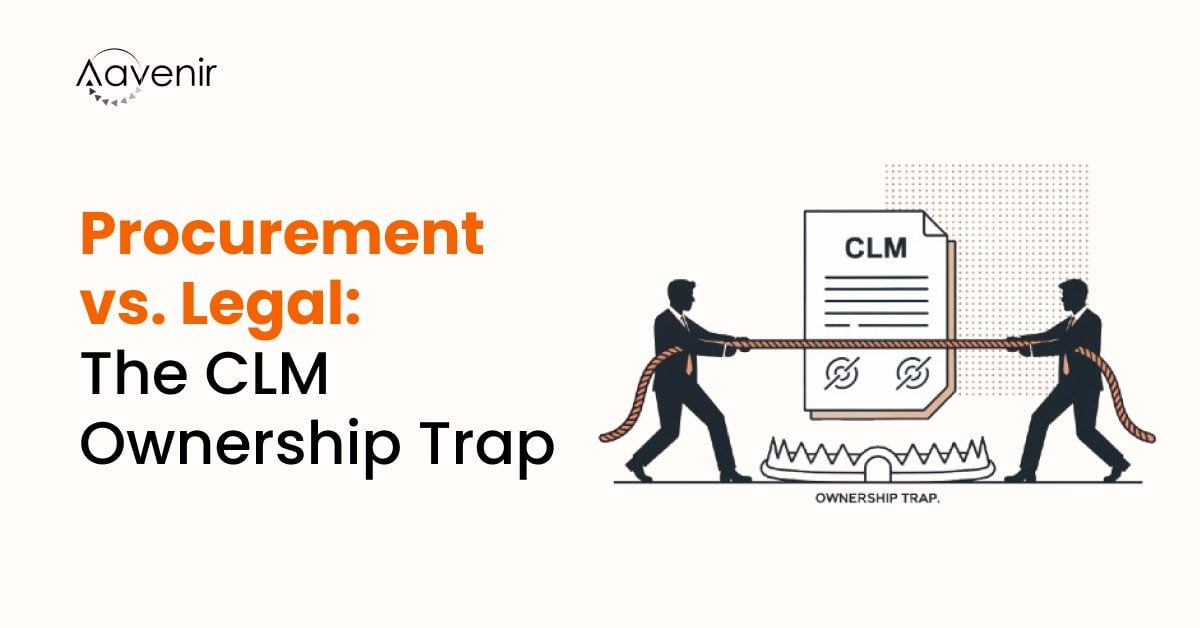After my last article “10 Essential Features of The Best Contract Management’ published here, I have received numerous views and feedback, but the biggest one has been about AI in contract management! As per The Global CIO Point of View, in a survey conducted by ServiceNow, nearly 9 out of 10 CIOs already use machine-learning technology or have plans to adopt it. Many of us are aware of ML & AI but we are yet to unleash the full potential of what AI has in store for many different use cases. If you are managing contracts for a living, this article is dedicated to all curious brains like you, who have been asking “how AI can impact my day-to-day life ?”.
Role of Artificial intelligence in Contract Lifecycle Management (CLM)
The role of Artificial intelligence in CLM can be divided into three core categories and they define your path to AI adoption as per the sequence below:
- Contract data extraction from active contracts, using ML
- AI powered assistance during Contract Authoring
- AI-based contract obligations Management

1. Contract Data Extraction
Import third-party contracts using NLP and Machine Learning (ML) technologies
Let’s say you decided to implement a CLM solution. Great! But what about those thousands of contracts that your organization has created over the years or still continue to author using generic tools like Word or PDF generators? A lot of those contracts are sitting in Word or PDF form in shared folders while several more are still in physical paper form and are filed in a large cabinet at one of your offices. What do you do with them? You have to bring them in CLM system records since many of them are still active and you would need to track obligations and generate contract expiration alerts for active contracts.
Traditionally, there were BPO companies who used to manually extract the terms from the contracts and store them in your CLM system. However, new Machine Learning (ML) algorithms have made huge strides where your contract terms and clauses can be extracted with a fairly high percentage of accuracy. No need for a person to open the PDF file, read the terms and save them in an Excel file to track obligations, expiry dates, and more. All required information can be automatically extracted using advanced ML algorithms – even if the contract is in scanned image format. Of course, if the contract is in paper form, you have to pre-process those contracts by scanning them and keeping them in a central repository before invoking these ML algorithms. This legacy data extraction piece sets you up nicely for the next phases of AI adoption by providing the data for ML-engine to be mature. Data is the new fuel, remember?
2. AI-powered Cognitive Assistance for Contract Authoring
Cognitive smart suggestions of terms and clauses for contract language standardization
In a sequence of AI adoption, your second target should be automating contract authoring using AI. For years, contract lifecycle management platforms have just automated existing contract management processes, including authoring. This means that the tool just provided a place to enter data and wrapped workflow around it for review and approval. While this was a great first step, it is just converting existing manual processes into a CLM tool. However, your new CLM tool MUST act like a senior advisor, i.e. an AI component that is advising the users during contract authoring on picking the right terms. Your organization has done thousands of contracts over a period of last several years, the tool should be able to run through your past and active contracts, especially golden contracts, and suggest to the user the best terms to negotiate and reduce business risks!
Similarly, there is a long history and hidden pattern within your enterprise contracts about the clauses back and forth. When you author a new contract on the AI-based CLM, it should be able to understand clauses, compare them with your own clause library clauses and advise the users on which clauses are the recommended clauses in a given situation – based on geography, type of vendor, and value of the contract. Such cognitive assistance from an efficient AI tool can guide the user for the best terms and clauses to get your organization the best outcome, not to mention a faster deal cycle. This classic AI feature in the new CLM tool will also increase the CLM tool adoption across enterprises.
Speaking of tool adoption, Chatbot (Conversational Interface) is also an excellent tool to adopt during your contract authoring process. While not all chatbots are intelligent (read, Powered by AI), but they bring significant value addition for end users. Let’s say a sales guy is heading to the airport after a customer meeting and instead of firing up the laptop to create a new contract, the salesperson can simply start interacting with a Chatbot from the mobile (using Slack or any other interface) and the contract can be created and mailed automagically by just answering a few questions. The productivity and deal cycles can certainly go up by a notch!
3. AI-based Contract Obligations Management
Auto-extract contract obligations (SLAs, terms, clauses, etc.) and assign actions
Whenever CLM is talked about, the majority of conversations revolve around contract authoring pieces as that one is an easy place to get started. However, the true value – in fact, a hard CLM tool ROI – is going to come only when you start talking about obligation management within your enterprise contracts. Unfortunately, the technology was not mature enough and hence obligation management was always done manually by entering obligations from the contracts and tracking them. However, with the advent of the latest AI technologies, now you can extract obligations automatically from the contracts – including from 3rd party paper contracts. While the AI algorithms are pretty good at identifying and extracting quantifiable terms (e.g. Net 30 or 6% discount or 10/15/10 as the due date) from the contracts, the extraction of non-quantifiable obligations is still tricky. Think IP protection language or employee welfare requirements from the vendor. The company should definitely start by extracting and tracking quantifiable obligations, followed by non-quantifiable ones.
Considering these three main areas of AI for CLM, I would recommend starting with legacy data extraction using ML, followed by AI-guided contract authoring. As mentioned earlier, this sequence of AI adoption is also important as you need to set the platform with enough data and user adoption before going to the next, more advanced stage of AI.
Explore Aavenir AI-enabled CLM solution on ServiceNow
Having years of experience in the CLM space, Aavenir has developed an AI-powered CLM on the ServiceNow platform. If you are ready to take a leap in the new world of CLM where your users can be guided for optimum terms and contract data is extracted accurately for effective tracking, please Contact Aavenir or Schedule a Demo.



